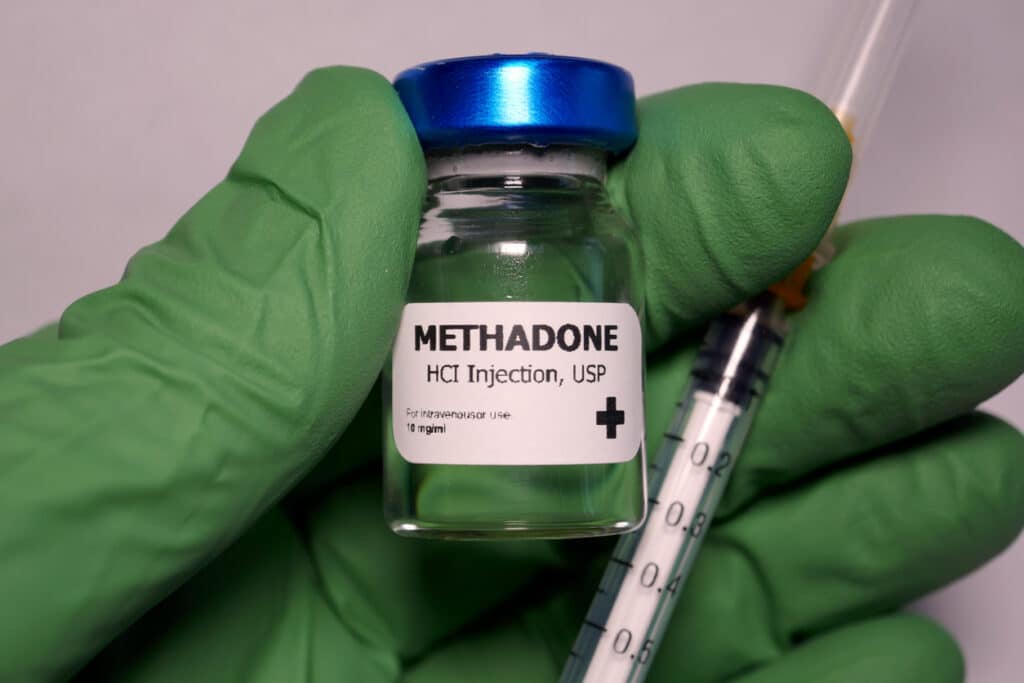Understanding Methadone and the Path to Freedom

The best way to get off methadone is through a medically supervised tapering program that gradually reduces your dose over several months while managing withdrawal symptoms with professional support.
Quick Answer – Best Methods to Get Off Methadone:
- Medically supervised tapering – Reduce dose by 10mg weekly until 40mg, then 2.5-5mg weekly to zero
- Inpatient detox – 24/7 medical monitoring and comfort medications
- Outpatient programs – Regular check-ins with medical staff during taper
- Comfort medications – Clonidine, gabapentin, and other symptom-specific treatments
- Psychological support – Counseling and therapy throughout the process
Methadone has helped millions of people recover from opioid addiction. As a long-acting opioid used in Medication-Assisted Treatment (MAT), it blocks withdrawal symptoms and reduces cravings. But many people reach a point where they want to be completely free from all substances.
“I woke up one day recently and thought ‘I need to come off this stuff and the money I save could really help out'” – this sentiment from someone who successfully tapered off methadone reflects what many people feel after years of stability.
The desire to stop methadone is completely normal. You might want to eliminate the daily clinic visits, reduce long-term health concerns, or simply achieve a completely drug-free life. Whatever your reasons, you deserve support and respect for this decision.
The reality is stark: Only around 13% of people who quit methadone treatment remain opioid-free long-term. Most people experience withdrawal symptoms within 24-36 hours of their last dose, and these symptoms can last 3-6 weeks or longer.
But here’s the good news – with proper medical support and a gradual approach, you can successfully get off methadone while minimizing discomfort and maximizing your chances of long-term success.

Simple guide to best way to get off methadone terms:
The Dangers of Quitting ‘Cold Turkey’

Let’s be honest about something important: stopping methadone abruptly isn’t just uncomfortable – it’s genuinely dangerous. While the best way to get off methadone involves gradual reduction, many people consider just stopping all at once. We understand the impulse, but we need to talk about why this isn’t safe.
When you quit methadone “cold turkey,” your body experiences what we call abrupt cessation shock. Think of it like slamming on the brakes while driving 60 mph – everything gets thrown forward violently. Your nervous system, which has adapted to methadone’s presence, suddenly has to function without it.
The severe withdrawal symptoms that follow can be overwhelming. You’ll likely experience intense flu-like symptoms, crushing anxiety that can escalate to panic attacks, and profound depression that sometimes includes suicidal thoughts. The physical symptoms are brutal too – dehydration from constant vomiting and diarrhea, dangerous blood pressure changes, and in rare cases, even seizures.
But here’s the most frightening part: your tolerance drops dramatically within just days of stopping methadone. If you relapse during this vulnerable period – and statistically, most people do – the same dose that was previously safe could now cause a fatal overdose. This is why the overdose danger is so much higher when people quit cold turkey.
The psychological distress can be just as dangerous as the physical symptoms. Many people describe feeling like they’re losing their mind, experiencing severe depression, and having intense cravings that feel impossible to resist. This emotional turmoil contributes to the high relapse risk – roughly three in four people who complete opioid detoxification relapse within two to three years, and those who quit cold turkey have even higher rates.
What makes this even more challenging is Post-Acute Withdrawal Syndrome (PAWS), which can persist for months or even years after the acute withdrawal ends. PAWS includes ongoing mood swings, sleep problems, and difficulty experiencing pleasure – symptoms that can derail recovery long after the initial detox is over.
The Importance of Medically Supervised Detox: Why DIY Detox Can Be Dangerous
Why Methadone Withdrawal is Unique
Methadone isn’t like other opioids, and understanding its unique properties helps explain why withdrawal is so challenging. These characteristics make methadone withdrawal particularly difficult to steer alone.
The long half-life of methadone – approximately 24 hours with repeated dosing – means it takes much longer to leave your system than other opioids. While heroin withdrawal starts within hours, methadone has a delayed onset of withdrawal that can catch people completely off guard. You might feel fine for the first day or two, thinking “this isn’t so bad,” then suddenly get hit with severe symptoms.
This delayed timeline means withdrawal symptoms may not begin for several days, with peak withdrawal potentially not starting until a full week after your last dose. It’s like a slow-motion train wreck – you can see it coming, but it takes days to fully arrive.
The prolonged withdrawal duration is another unique challenge. While heroin withdrawal typically lasts 7-10 days, methadone withdrawal usually stretches for 3-6 weeks for acute symptoms. Many people aren’t prepared for this marathon of discomfort, which contributes to higher relapse rates.
Perhaps most importantly, methadone causes significant brain chemistry adaptation. Your brain has literally rewired itself around the presence of methadone, affecting neurotransmitter production and emotional regulation. It can take up to six months for your brain to return to normal functioning after methadone detox.
This is why we emphasize the difference between physical dependence and addiction. Physical dependence is your body’s normal response to regular methadone use – it’s not a moral failing or weakness. Your brain has adapted to function with methadone, and it needs time to learn how to work without it.
The first 7-10 days are typically the worst, with symptoms including severe body aches, nausea, vomiting, diarrhea, chills, sweating, anxiety, and intense cravings. Many people describe it as the worst flu of their life, combined with crushing emotional pain.
Side Effects and Long-Term Effects of Methadone
The Best Way to Get Off Methadone: Medically Supervised Tapering

The best way to get off methadone is through a slow, medically supervised taper that gradually reduces your dose over several months. Think of it like stepping down a staircase rather than jumping off a cliff – each step gives your body time to adjust before taking the next one.
A proper methadone taper works in two distinct phases. During the initial reduction phase when you’re above 40mg, your doctor will typically reduce your dose by 10mg every 1-3 weeks. This might sound slow, but your body handles these larger reductions better at higher doses.
Once you reach 40mg, things change. The careful reduction phase involves much smaller decreases of 2.5-5mg every 1-3 weeks. These final milligrams are often the hardest to give up, which is why the process slows down significantly.
Your comfort level is the most important factor. If you’re experiencing cravings or withdrawal symptoms, each step down can take several weeks. There’s no prize for finishing fastest – success is measured by staying clean long-term, not by speed.
The medical supervision part isn’t just about monitoring – it’s about having someone in your corner who understands exactly what you’re going through. Your healthcare team can adjust the timeline, provide comfort medications, and offer encouragement when things get tough.
Why Tapering is the Best Way to Get Off Methadone
Imagine your brain as a complex orchestra that’s been playing the same song for years. Methadone has been conducting this orchestra, keeping everything in harmony. When you suddenly remove the conductor, chaos erupts. But when you gradually reduce the conductor’s influence, the orchestra learns to play without guidance.
Tapering avoids system shock by allowing your body to gradually adjust to lower levels of methadone. Your brain doesn’t panic because the changes happen slowly enough for it to compensate.
Your brain gets time to readjust its natural chemical balance. After months or years on methadone, your brain has forgotten how to produce certain feel-good chemicals on its own. A slow taper gives it time to remember.
Withdrawal symptoms stay manageable instead of overwhelming. You might feel some discomfort, but it’s the difference between having a bad day and feeling like you’re dying.
Most importantly, people who taper slowly are more likely to stay clean long-term. The World Health Organization and SAMHSA both recommend gradual dose reduction for exactly this reason – it works better than any other approach.
The WHO specifically recommends reducing methadone dose by 5-10mg per week until you reach 40mg, then slowing reductions to 5mg per week. However, many addiction specialists now recommend even slower tapers based on newer research showing better outcomes.
How Long Does a Methadone Taper Take?
The honest answer? It depends on several factors that are unique to you. Your starting dose is the biggest factor – someone on 60mg will obviously finish faster than someone on 120mg. But it’s not just about the numbers.
Your comfort level with symptoms plays a huge role. Some people can handle a bit more discomfort and move slightly faster, while others need to go slower to avoid triggering cravings or relapse.
Your physical health matters too. If you have other medical conditions or take medications that interact with methadone, your taper might need to be more conservative.
Psychological stability is crucial. If you’re dealing with depression, anxiety, or major life stressors, a slower taper gives you time to develop coping skills.
Here’s what realistic timelines look like. For someone starting at 60mg, the quickest possible taper takes about 9 weeks, but a taper designed for the highest success rates takes around 6 months. For someone at 120mg, you’re looking at 16 weeks minimum, but 10 months is more realistic for lasting success.
There’s a simple way to estimate your timeline: add one week for every 10mg your dose is above 40mg, then add 6-12 weeks for the final reduction to zero. But remember – this is just a starting point. Your actual taper should be individualized based on how you respond.
The research consistently shows that longer tapers have substantially higher success rates. We’ve worked with patients who rushed their taper and ended up back where they started, while those who took their time achieved the freedom they were seeking.
Managing Withdrawal Symptoms During Your Taper

Even with the best way to get off methadone – a slow, medically supervised taper – you’ll likely experience some withdrawal symptoms. The good news? These symptoms can be effectively managed with the right medical support and holistic approach.
Think of it this way: you’re not just “toughing it out” through withdrawal. You’re working with a medical team that understands exactly what you’re going through and has the tools to keep you comfortable throughout the process.
At Summer House Detox Center, we’ve helped hundreds of people successfully taper off methadone. Our approach combines comfort medications with holistic therapies and emotional support to address every aspect of your experience.
Comfort medications form the backbone of symptom management. We use clonidine to control blood pressure changes, sweating, and anxiety. Gabapentin helps with nerve pain and those uncomfortable restless legs that keep you awake at night. For digestive issues, we provide loperamide for diarrhea and ondansetron for nausea. When sleep becomes elusive, we have safe, non-addictive sleep aids to help you rest.
Holistic therapies work alongside medications to promote healing. Massage therapy can work wonders for muscle aches and tension. Many of our patients find acupuncture surprisingly effective for overall comfort. We teach meditation and mindfulness techniques that you can use long after you leave our facility.
Proper nutrition and hydration are crucial during withdrawal. Your body is working hard to heal, and it needs the right fuel. Our nutritional support helps prevent the weakness and fatigue that can make withdrawal feel worse.
Emotional support is available 24/7. Our nursing staff includes people who’ve been through their own recovery journey – they understand what you’re feeling because they’ve felt it too. This peer support, combined with professional counseling, helps you process the emotional aspects of getting off methadone.
The key is addressing symptoms as they arise rather than waiting for them to become severe. Our medical team monitors you closely and adjusts your treatment plan as needed. You don’t have to suffer through this alone.
Managing Withdrawal Symptoms: How Summer House Detox Center Helps You Through the Hardest Days
Common Acute Withdrawal Symptoms
Understanding what to expect can actually reduce anxiety about the process. When you know what’s coming, it’s less scary and more manageable.
Physical symptoms are often the first to appear. You might experience muscle aches and pains that feel like you’ve run a marathon. Joint stiffness can make simple movements uncomfortable. Sweating and chills often happen together – you might feel hot and cold at the same time.
Digestive symptoms are common and uncomfortable. Nausea and vomiting can make it hard to keep food down. Diarrhea can lead to dehydration if not properly managed. You might also experience a runny nose and tearing that feels like a persistent cold.
Cardiovascular symptoms include rapid heartbeat and high blood pressure. This is why medical supervision is so important – we monitor these changes and can intervene if needed.
Psychological symptoms can be just as challenging as physical ones. Anxiety and panic are common, especially in the first few days. Depression often follows as your brain chemistry adjusts. Irritability and mood swings can make you feel unlike yourself.
Sleep disturbances are almost universal. Insomnia can leave you exhausted, while restlessness makes it hard to get comfortable. Intense cravings can be overwhelming, especially when you’re tired and emotionally vulnerable.
Medical professionals use tools like the Clinical Opiate Withdrawal Scale (COWS) to objectively measure withdrawal severity. This helps us adjust your treatment plan based on your actual symptoms rather than guesswork.
The timeline typically follows a pattern. Days 1-2 bring fever, sweating, chills, and muscle aches. Days 3-8 are often the most challenging, with severe body aches, digestive issues, and intense cravings. Days 9-15 see physical symptoms improving while emotional symptoms like depression and irritability persist. After day 15, Post-Acute Withdrawal Syndrome begins.
Navigating Post-Acute Withdrawal Syndrome (PAWS)
PAWS is the extended phase of withdrawal that many people don’t expect. Unlike acute withdrawal, which has clear physical symptoms, PAWS is primarily psychological and emotional. The symptoms come and go in waves, which can be frustrating when you thought you were “done” with withdrawal.
Common PAWS symptoms include depression and mood swings that seem to come out of nowhere. Anhedonia – the inability to feel pleasure from things you used to enjoy – can be particularly discouraging. Chronic fatigue might make simple tasks feel overwhelming.
Sleep disturbances continue during PAWS, but they’re different from acute withdrawal insomnia. You might be able to fall asleep but wake up frequently or have vivid, disturbing dreams. Anxiety and panic attacks can resurface weeks or months after your last dose.
Cognitive difficulties – often called “brain fog” – can affect your memory, concentration, and decision-making. Emotional numbness might make you feel disconnected from family and friends. Irritability can strain relationships just when you need support most.
PAWS duration varies greatly between individuals. It may continue for many months, and in some cases for up to 2 years after acute withdrawal. However, symptoms gradually improve over time, and the “waves” become less frequent and less intense.
Coping strategies become essential during PAWS. Regular exercise helps boost natural endorphins and improves mood. A consistent sleep schedule supports your brain’s healing process. Stress management techniques like meditation and deep breathing can help during difficult moments.
Ongoing therapy and support groups provide emotional support and practical coping skills. Patience with the healing process is crucial – your brain is literally rewiring itself, and this takes time. If depression becomes severe, medication may be helpful and is not a sign of failure.
Remember: PAWS is temporary. Your brain is healing and rebalancing itself. With time, support, and the right coping strategies, you will feel better. Many people find that once they get through PAWS, they feel better than they have in years.
Life After Methadone: Strategies for Long-Term Sobriety

Getting off methadone is just the beginning. Long-term success requires building a strong foundation for recovery that addresses the underlying causes of addiction and creates new, healthy patterns of living.
Building Your Support System:
- Family and friends who support your recovery
- Healthcare providers who understand addiction
- Therapists specializing in addiction treatment
- Peer support groups
- Sponsors or mentors in recovery
Creating New Routines:
- Regular sleep schedule
- Healthy eating habits
- Exercise routine
- Meaningful work or volunteer activities
- Hobbies and interests that bring joy
- Stress management practices
Identifying and Managing Triggers:
- Emotional triggers (stress, loneliness, anger)
- Environmental triggers (places, people, situations)
- Physical triggers (pain, illness, fatigue)
- Social triggers (peer pressure, social events)
The goal is to create a life so fulfilling that you don’t want to return to using substances. This takes time and intentional effort, but it’s absolutely possible.
From Detox to Recovery: The Next Steps After Completing a Detox Program
The Role of Psychological Support
Addiction is a complex disease that affects both the brain and behavior. Successful recovery requires addressing the psychological aspects of addiction through various therapeutic approaches:
Individual Counseling: One-on-one sessions with a therapist help you understand the root causes of your addiction, develop coping strategies, and work through personal challenges.
Cognitive Behavioral Therapy (CBT): This evidence-based approach helps you identify and change negative thought patterns and behaviors that contribute to substance use.
Group Therapy: Sharing experiences with others in recovery provides support, accountability, and practical advice from people who understand your struggles.
Family Therapy: Addiction affects entire families. Family therapy helps repair relationships and teaches family members how to support your recovery.
Trauma-Informed Care: Many people with addiction have experienced trauma. Addressing these underlying issues is crucial for long-term recovery.
The therapeutic relationship provides a safe space to process emotions, develop healthy coping mechanisms, and build the skills needed for lasting sobriety.
Finding Community and Alternative Support
Recovery is not a journey you have to take alone. Building connections with others who understand your experience is invaluable:
12-Step Programs: Narcotics Anonymous (NA) provides a structured approach to recovery with sponsorship and step work. The program is free and available worldwide.
SMART Recovery: This science-based program focuses on motivation, coping with urges, managing thoughts and behaviors, and living a balanced life.
Peer Support Specialists: These are people in recovery who have received special training to help others. They provide hope, practical advice, and living proof that recovery is possible.
Building Sober Friendships: Developing relationships with people who don’t use substances is crucial. This might mean joining clubs, volunteering, or participating in activities you enjoy.
Online Communities: Virtual support groups can provide 24/7 connection with others in recovery, especially helpful during difficult moments.
According to research, people attending NA and AA programs had an 81% abstinence rate compared to a 26% abstinence rate among non-attendees. The power of community support cannot be overstated.

Your Journey to a Methadone-Free Life Starts Here
The best way to get off methadone isn’t something you have to figure out alone. At Summer House Detox Center, we’ve walked alongside hundreds of people who’ve made this brave decision, and we understand exactly what you’re going through right now.
Maybe you’re feeling scared about the withdrawal process. Maybe you’ve tried to quit before and it didn’t work out. Maybe you’re worried about judgment from others. We want you to know that every single feeling you’re having is completely normal – and more importantly, you are not alone in this journey.
What makes our approach different is that we truly understand that getting off methadone isn’t just about managing physical symptoms. It’s about reclaiming your life, your freedom, and your sense of self. That’s why we focus on treating the whole person, not just the addiction.
Our personalized care means we sit down with you and create a treatment plan that fits your specific situation. Your starting dose, your medical history, your family situation, your fears and hopes – all of this matters to us. We don’t believe in one-size-fits-all approaches because we know that your recovery journey is uniquely yours.
The medical supervision we provide means you’ll never have to wonder if what you’re experiencing is normal or if you need help. Our experienced medical team is here 24/7, monitoring your progress and adjusting your care as needed. We use the latest comfort medications and holistic therapies to make sure you’re as comfortable as possible throughout the process.
Here’s something that makes us especially proud: many of our team members are in recovery themselves. They’re not just professionally trained – they’ve been exactly where you are right now. They know what it feels like to wake up and realize you want your life back. They know the fear, the hope, and everything in between.
We believe deeply in treating every person with dignity and respect. Addiction is a medical condition, not a moral failing. You deserve compassionate care, not judgment. You deserve to feel safe and supported while you heal.
Professional guidance through a medically supervised detox gives you the best possible chance at success. We’ve seen too many people try to quit on their own and end up back where they started – or worse. The statistics don’t lie: medically supervised tapers have much higher success rates than going it alone.
Your long-term success matters more to us than anything else. That’s why we don’t just focus on getting you through detox – we help you build the foundation for lasting recovery. We address the emotional and psychological aspects of addiction, help you develop healthy coping strategies, and connect you with ongoing support.
The truth is, deciding to get off methadone takes incredible courage. You’ve already taken the hardest step by admitting you want something different for your life. With proper medical support, a gradual tapering approach, and comprehensive care, you can absolutely break free from methadone and build the life you’re dreaming of.
Recovery is possible. You deserve to live free from dependence on any substance. Your new life is waiting, and we’re here to help you take that first step toward freedom.
Take the first step toward freedom at our Methadone Detox center
Remember: The best way to get off methadone is with professional medical support, a gradual tapering schedule, comprehensive symptom management, and ongoing psychological support. You don’t have to suffer through withdrawal alone – help is available, and recovery is absolutely possible.
